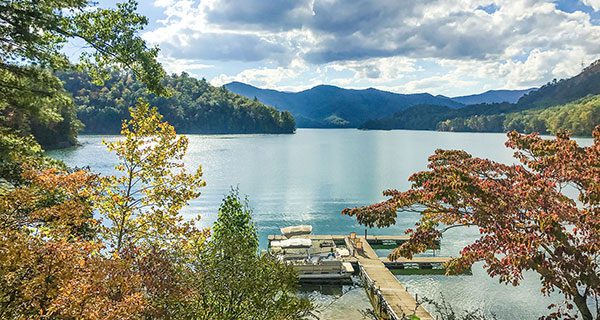(An abbreviated excerpt from “Flyfisher’s Guide to North Carolina & Georgia”)
Snowbird Creek, and its main tributary Big Snowbird Creek, are places fly anglers could spend days exploring and still leave water untouched. On its top end, Big Snowbird is one of the largest remaining flows populated with native southern Appalachian brook trout. On its lower end, near its mouth at Lake Santeetlah, Snowbird plays host to an annual migration of lake-run rainbows that reach lengths well in excess of 20 inches. In between these two stretches, the river has sections of hatchery-supported waters, trophy waters, a delayed harvest and steep gorges where wild rainbows and browns thrive. It’s a river that really does have it all.
The biggest draw for most trout anglers is Big Snowbird Creek. In 2013 a 2.9-mile delayed harvest section was added to the creek. This stretch, from the concrete bridge over Big Snowbird on FR 2579 to the footbridge at the end of the gravel road that parallels the creek, receives heavier stockings and is catch-and-release, artificial-only from October into June. This provides some much needed protection for a stream where access is almost too easy. Before the regulations were implemented, I remember driving past miles of some of the most gorgeous-looking trout water to get to the walk-in section where there were actually fish. Now, it’s well worth stopping to fish.
At the end of the gravel road, a rail junction existed when the area was logged in the 1920s. This point, known as “The Junction,” begins some of the best walk-in water in western North Carolina. Fishing pressure drops off progressively the farther you’re willing to walk, and the water is a seemingly endless series of pocket water stretches broken by deep bend runs and plunge pools. Most of the fish are small wild rainbows, but there are some browns, and some big browns will occasionally reward anglers willing to spend some time dredging out the deeper holes.
There are miles of stream suitable for a 3- or 4-weight rod upstream of The Junction. On some days, the fishing can be gangbusters for lots of little wild trout; on other days it can be downright tough. Like any wild stream, the fish can be wary of predators and sometimes selective about what they eat.
Lower Falls, marked as Big Falls on many maps, is the lowest of several cascades that serve as barriers to block upstream movement of rainbows and browns. Above Lower Falls, there are seven or more miles of creek where only brook trout live up into the headwaters. It’s big water in terms of native brook trout, or “speck,” fishing. There are some good campsites along the trail that meanders to and away from the creek, and the upper end of Big Snowbird is an outstanding place to pack in and spend a few days fishing.
For GPS coordinates to access points and detailed maps of Snowbird and all of North Carolina’s and Georgia’s best trout water, check out “Flyfishers Guide to North Carolina & Georgia.” It is available at fly shops, on Amazon, and signed copies are available from the author by emailing nsc8957@gmail.com.

